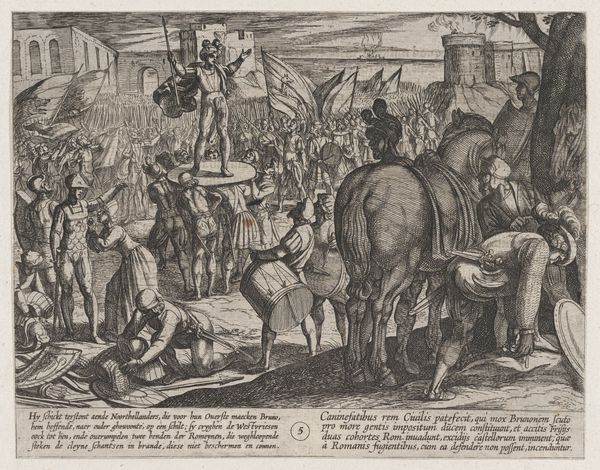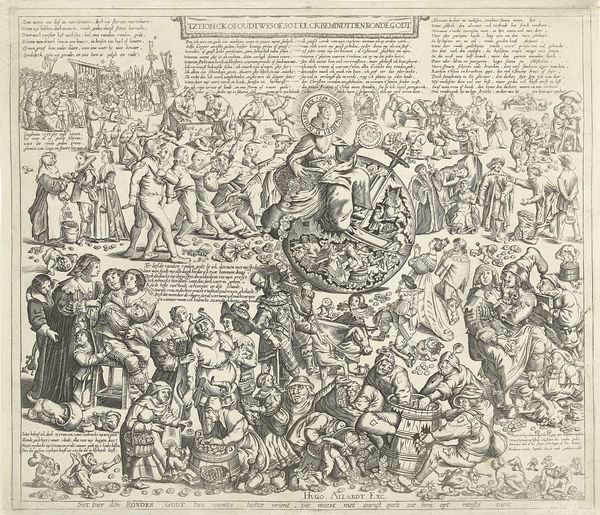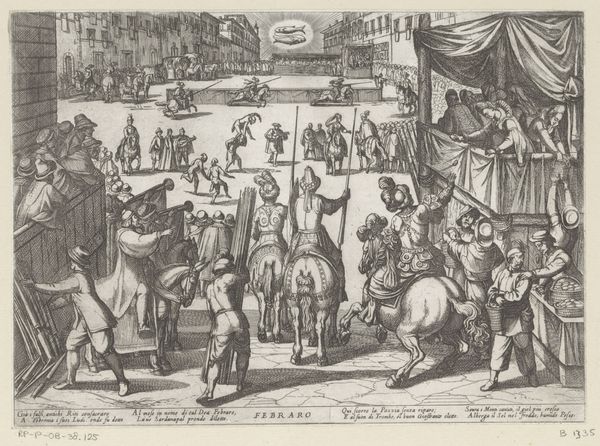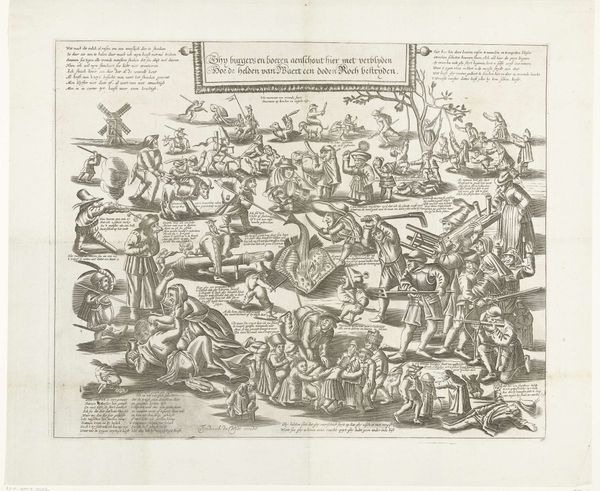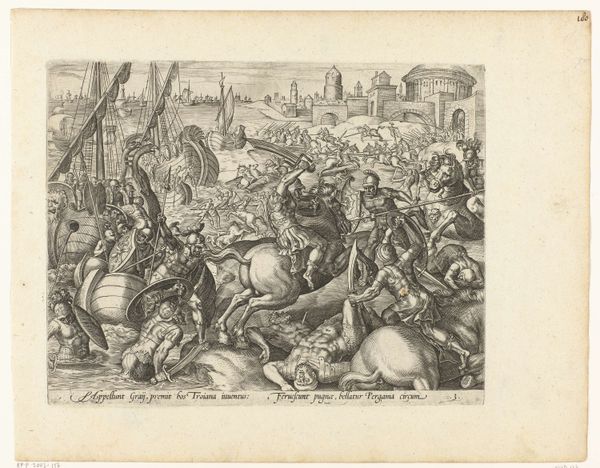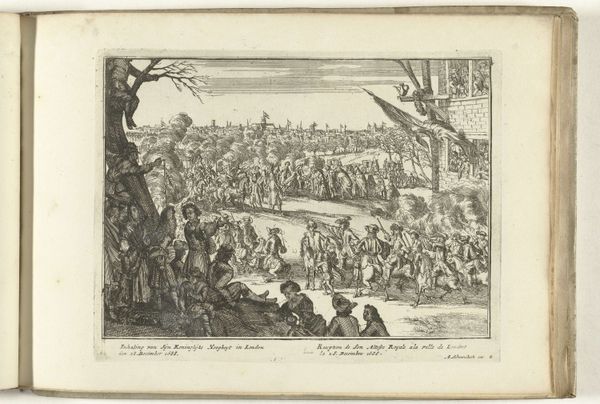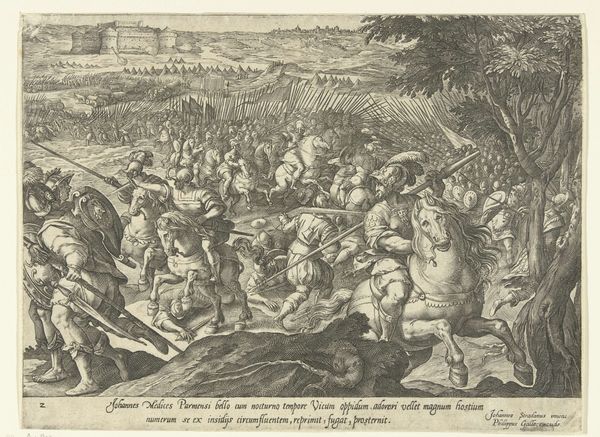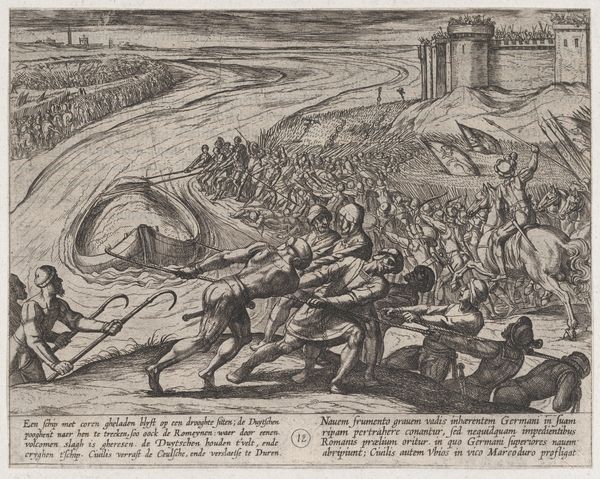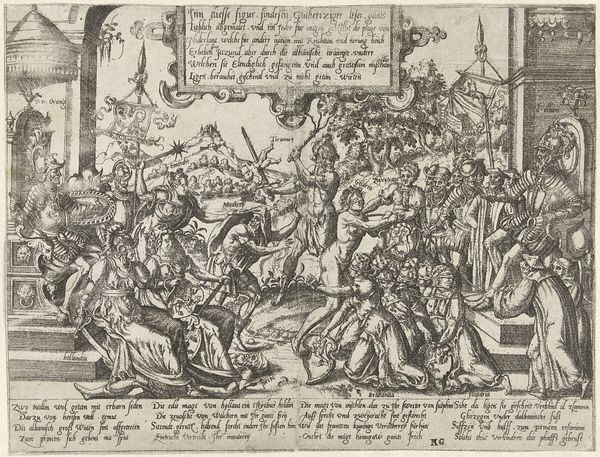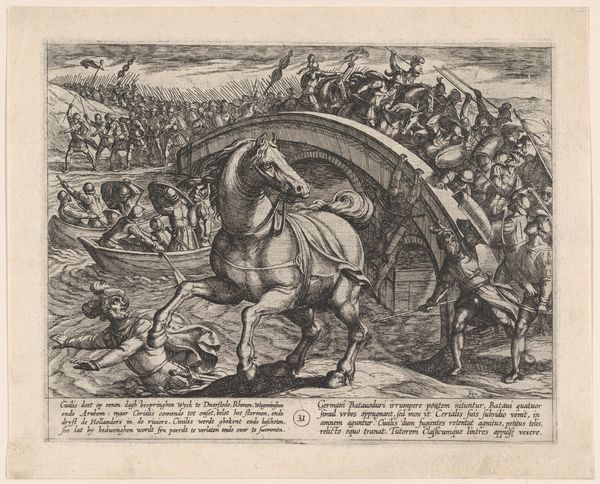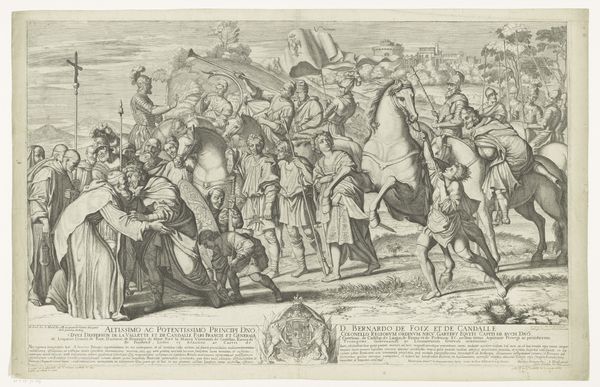
De Hollandse Ridder op de Nederlandse Leeuw verjaagt het beest van Babylon, 1705 1689 - 1706
0:00
0:00
carelallard
Rijksmuseum
print, engraving
#
allegory
#
narrative-art
#
baroque
# print
#
figuration
#
line
#
history-painting
#
engraving
Dimensions: height 168 mm, width 284 mm
Copyright: Rijks Museum: Open Domain
Curator: This intricate engraving, created between 1689 and 1706 by Carel Allard, is titled "De Hollandse Ridder op de Nederlandse Leeuw verjaagt het beest van Babylon, 1705". It’s currently held in the Rijksmuseum collection. Editor: What a flurry of figures and lines! My first impression is chaotic, yet undeniably dramatic. There's a strong contrast between the darker, crowded foreground and what seems like a more orderly procession in the background. Curator: Allard was a master printmaker. Here, the dense lines contribute to a highly detailed allegory, wouldn't you agree? Note the depiction of the Dutch Lion vanquishing the 'Beast of Babylon'—a clear reference to political and religious tensions of the period. Consider the social context: This print would have circulated widely, reinforcing nationalistic sentiments. Editor: The composition definitely reinforces that idea. The knight on the lion is the focal point, the lines all leading back to him. What is particularly compelling is the dynamism—how the artist managed to convey so much movement within the constraints of the engraved line. Semiotically speaking, each element, like the dragon or the crowd of figures in the foreground, functions as a signifier within the broader political narrative. Curator: Exactly. The technique also suggests a complex production process; Allard’s workshop surely had a role to play in dissemination. We can look at the print not only for its artistry, but also for what it tells us about the labor and industry of printmaking during the Dutch Golden Age. The paper, ink, the very act of reproduction - all are material manifestations of Dutch national identity being produced and consumed. Editor: From a purely formal perspective, I appreciate how Allard balances the dense areas with more open spaces to give the eye some breathing room. Even the inscriptions at the top and bottom, though visually separate, contribute to the overall structure. Curator: A very material form of visual rhetoric. Considering its time and place in history, this print functioned as both propaganda and commodity. Editor: Indeed. The piece uses sharp visual rhetoric. After further thought, my appreciation for Allard's control of line and composition grows, despite its initial appearance of chaos. Curator: Analyzing Allard’s piece this way emphasizes the potent impact this type of visual production would have had on its contemporary viewers.
Comments
No comments
Be the first to comment and join the conversation on the ultimate creative platform.

